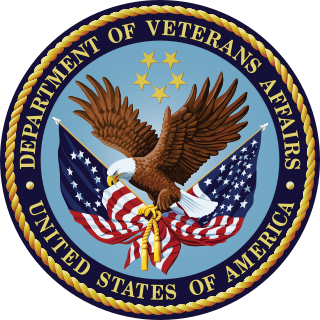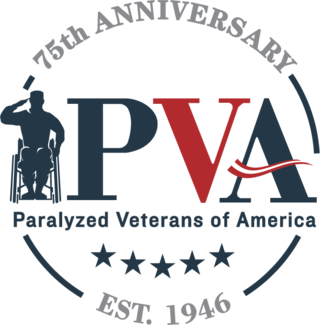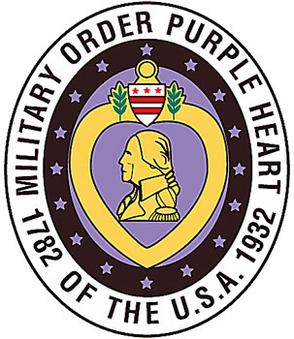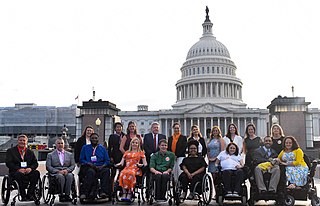
The G.I. Bill, formally known as the Servicemen's Readjustment Act of 1944, was a law that provided a range of benefits for some of the returning World War II veterans. The original G.I. Bill expired in 1956, but the term "G.I. Bill" is still used to refer to programs created to assist American military veterans.

The United States Department of Veterans Affairs (VA) is a Cabinet-level executive branch department of the federal government charged with providing lifelong healthcare services to eligible military veterans at the 170 VA medical centers and outpatient clinics located throughout the country. Non-healthcare benefits include disability compensation, vocational rehabilitation, education assistance, home loans, and life insurance. The VA also provides burial and memorial benefits to eligible veterans and family members at 135 national cemeteries.

A veteran is a person who has significant experience and expertise in an occupation or field.
According to the United States Government Accountability Office (GAO), there are 1,138 statutory provisions in which marital status is a factor in determining benefits, rights, and privileges. These rights were a key issue in the debate over federal recognition of same-sex marriage. Under the 1996 Defense of Marriage Act (DOMA), the federal government was prohibited from recognizing same-sex couples who were lawfully married under the laws of their state. The conflict between this definition and the Due Process Clause of the Fifth Amendment to the Constitution led the U.S. Supreme Court to rule DOMA unconstitutional on June 26, 2013, in the case of United States v. Windsor. DOMA was finally repealed and replaced by the Respect for Marriage Act on December 13, 2022, which retains the same statutory provisions as DOMA and extends them to interracial and same-sex married couples.

The Veterans of Foreign Wars (VFW), formally the Veterans of Foreign Wars of the United States, is a patriotic organization of U.S. war veterans who fought in wars, campaigns, and expeditions on foreign land, waters, or airspace as military service members. Established on September 29, 1899, in Columbus, Ohio, the VFW is headquartered in Kansas City, Missouri. It was congressionally chartered in 1936.

Jesse Brown was a veteran of the United States Marine Corps who served as United States Secretary of Veterans Affairs under President Bill Clinton from 1993 to 1997.
The US Department of Veterans Affairs provides a wide variety of benefits, e.g., educational assistance, healthcare, assisted living, home loans, insurance, and burial and memorial services, for retired or separated United States armed forces personnel, their dependents, and survivors. The VA provides compensation to disabled veterans who suffer from a medical disorder or injury that was incurred in, or aggravated by, their military service, and which causes social and occupational impairment. Many U.S. states also offer disability benefits for veterans.

The Veterans Benefits Administration (VBA) is an agency of the U.S. Department of Veterans Affairs. It is responsible for administering the department's programs that provide financial and other forms of assistance to veterans, their dependents, and survivors. Major benefits include Veterans' compensation, Veterans' pension, survivors' benefits, rehabilitation and employment assistance, education assistance, home loan guaranties, and life insurance coverage.
Social Security Disability Insurance is a payroll tax-funded federal insurance program of the United States government. It is managed by the Social Security Administration and designed to provide monthly benefits to people who have a medically determinable disability that restricts their ability to be employed. SSDI does not provide partial or temporary benefits but rather pays only full benefits and only pays benefits in cases in which the disability is "expected to last at least one year or result in death." Relative to disability programs in other countries in the Organisation for Economic Co-operation and Development (OECD), the SSDI program in the United States has strict requirements regarding eligibility.

The Paralyzed Veterans of America was established in 1946 with the goal of serving the needs of disabled veterans. The organization was created to assist members, such as veterans of the armed forces living with spinal cord injuries or diseases like multiple sclerosis (MS) or amyotrophic lateral sclerosis (ALS) in living with increased independence and dignity.

The Military Order of the Purple Heart (MOPH) is a congressionally chartered (Title 36 USC Chapter 1405) United States war veterans organization. Headquartered just outside Washington, D.C., it has a membership of approximately 45,300 veterans. It is unique in that its members are exclusively men and women who have received the Purple Heart award while serving as a member of the U.S. Military.

United Spinal Association is a nonprofit membership, disability rights and veterans service organization in the United States. It was formed in 1946 as Eastern Paralyzed Veterans Association by a group of paralyzed World War II veterans from New York City.
Disability benefits are a form of financial assistance designed to support individuals who are unable to work due to a chronic illness, disease or injury. Disability benefits are typically provided through various sources, including government programs, group disability insurance provided by employers or associations or private insurance policies typically purchased through a licensed insurance agent or broker, or directly from an insurance company.

The Florida Department of Veterans' Affairs (FDVA) is a government agency of the state of Florida under the authority of the Governor of Florida charged with helping veterans and their families to receive all benefits they are legally entitled to.
Swords to Plowshares is a veterans organization that provides job training, housing, and benefits advocacy to low income and homeless U.S. military veterans. Swords to Plowshares also operates a drop-in center for veterans requiring emergency services, and engages in policy work. It is a 501(c)(3) non-profit organization headquartered in San Francisco, supported by governmental and private grants, as well as donations from individuals. Michael Blecker is the executive director.

The United States has compensated military veterans for service-related injuries since the Revolutionary War, with the current indemnity model established near the end of World War I. The Department of Veterans Affairs (VA) began to provide disability benefits for post-traumatic stress disorder (PTSD) in the 1980s after the diagnosis became part of official psychiatric nosology.

An Honor Flight is conducted by non-profit organizations dedicated to transporting as many United States military veterans as possible to see the memorials of the respective war(s) they fought in Washington, DC, at no cost to the veterans. These organizations are focused on bringing veterans of World War II to the National World War II Memorial, and any veteran with a terminal illness, to see the memorial of the war they fought in. Organizers plan to "naturally transition" their programs to focus on veterans of the Korean War, the Vietnam War, and subsequent wars as the veterans of those wars get older.

The American Veterans Disabled for Life Memorial is a memorial in Washington, D.C., which honors veterans of the armed forces of the United States who were permanently disabled during the course of their national service. Congress adopted legislation establishing the memorial on October 23, 2000, authorizing the Disabled Veterans for Life Memorial Foundation to design, raise funds for, and construct the memorial. The fundraising goal was reached in mid-2010 and ground for the memorial broken on November 10, 2010. The memorial was dedicated by President Barack Obama on October 5, 2014.

The Board of Veterans' Appeals (BVA) is an administrative tribunal within the United States Department of Veterans Affairs (VA), located in Washington, D.C. Established by Executive Order on July 28, 1933, it determines whether U.S. military veterans are entitled to claimed veterans' benefits and services. The Board's mission is to conduct hearings and decide appeals properly before the Board in a timely manner. The Board's jurisdiction extends to all questions in matters involving a decision by the Secretary under a law that affects a provision of benefits by the Secretary to Veterans, their dependents, or their Survivors. Final decision on such appeals are made by the Board based on the entire record in the proceedings and upon consideration of all evidence and applicable provisions of law and regulation. The Board's review is de novo.

The M21-1 Adjudication Procedures Manual details policies and procedures for Veterans Benefits Administration (VBA) staff who develop and adjudicate U.S. veterans' disability benefit claims.


















